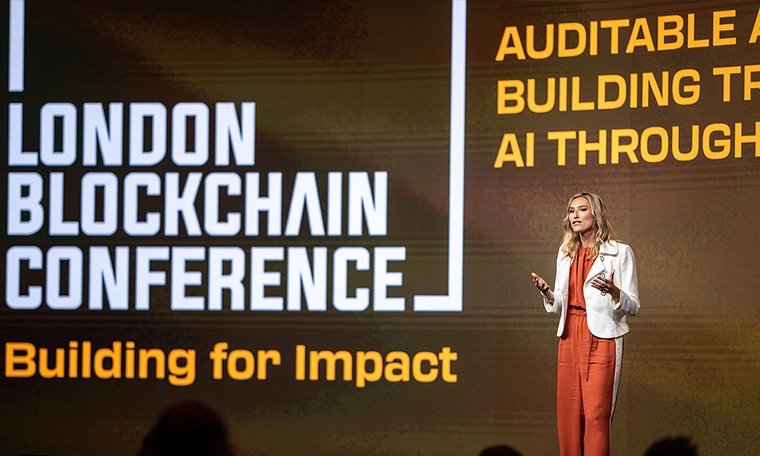Summary of The Five Tests for Stablecoins:
- Highway Test: A stablecoin must clearly outperform traditional systems with faster, cheaper, more efficient transactions.
- Utility Test: It needs real-world applications beyond crypto trading to prove genuine usefulness.
- Profitability Test: A viable stablecoin must generate sustainable income, not rely on speculation.
- Credibility Test: Compliance, transparency, and auditability are non-negotiable for institutional trust.
- Future-Proofing Test: It must work alongside CBDCs to stay relevant in a hybrid digital currency landscape.
The Next Evolution of Money
For all the talk about decentralisation and digital finance, the real question remains: what happens when crypto stops being speculative and starts being useful?
That’s where stablecoins come in – the bridge between the speed of digital assets and the trust of traditional money. They promise low-cost transfers, global reach, and instant settlement without the volatility that keeps regulators awake at night.
But as Dr Bernhard Kronfellner, Partner at Boston Consulting Group (BCG), reminded attendees at the London Blockchain Conference 2025, building a stablecoin isn’t the hard part. Scaling one – that’s the real test.
“It’s easy to make a stablecoin,” he said at the Visionaries Stage. “It’s much harder to make one that’s just as usable at 100 transactions a day as it is at 100,000.”
And so, Kronfellner introduced what he calls the five tests for real-world money – a pragmatic framework for separating hype from financial infrastructure that lasts.
1. Additional Value: The Highway Test
The first test is simple: does a stablecoin add value beyond existing systems?
Kronfellner illustrated the point with a visual – two roads, side by side. One, narrow and potholed; the other, a 20-lane megahighway. Traditional banking, with its friction and five-day settlement times, is the former. Stablecoins, when designed right, are the latter.
“Stablecoins can do for money what Airbnb did for accommodation,” he said.
At its best, a stablecoin network can turn a week-long wire transfer into a near-instant transaction, slashing costs while improving transparency and inclusivity. The promise isn’t about replacing banks – it’s about giving money the same frictionless flow we expect from information.
The challenge? Ensuring that “highway” connects to the rest of the financial world, not just an isolated ecosystem of digital wallets.
2. Use Cases: The Utility Test
Even the best technology means little without real-world application.
Kronfellner compared the current moment for stablecoins to the early days of the internet. Back then, few could have predicted that simple email protocols would evolve into today’s social media economy.
“The use cases we see right now – crypto trading, payments – are just the beginning,” he explained.
In the coming decade, AI agents may autonomously exchange funds, purchase assets, or manage investments, using stablecoins as their preferred medium. Tokenised supply chains, automated settlements, and programmable contracts are already hinting at this future.
But for these use cases to matter, stablecoins must integrate seamlessly with enterprise systems, regulatory frameworks, and consumer applications. That’s when the concept becomes indispensable rather than optional.
3. Revenues: The Profitability Test
Every innovation faces the same reality check – can it make money?
Kronfellner highlighted Tether as a case study: $13 billion in profit last year, generated by roughly 100 employees. That’s a lean operation with enviable economics.
Banks and financial institutions have noticed. Some are already exploring ways to capture a share of that revenue through stablecoin products or tokenised deposits. Others are taking a wait-and-see approach, wary of compliance risks but unwilling to miss out entirely.
The options on the table include:
- Launching custody and wallet services for stablecoins.
- Issuing their own bank-backed coins.
- Joining consortiums to create shared infrastructure.
- Or, as some Tier-3 banks may choose, doing nothing – and letting the market shake out winners and losers.
“For some banks,” he admitted, “waiting may be smart. But make no mistake: the upside is growing, and the downside is shrinking.”
Profitability isn’t just about margins; it’s about sustainability. The projects that generate value for users and institutions alike will outlive the speculative wave.
4. Regulations: The Credibility Test
If scalability is the engineering challenge, regulation is the political one.
Stablecoins sit at the intersection of money, technology, and policy – three domains that rarely move at the same speed. Yet, as Kronfellner pointed out, clarity is coming. Governments and central banks are increasingly recognising that stablecoins are too important to ignore.
The real test will be aligning innovation with compliance. Projects that can demonstrate transparency, risk management, and auditability will not just survive – they’ll attract institutional adoption.
Blockchain, by design, gives regulators the tools they’ve always wanted: traceability and programmable oversight. The winners of the next decade will be those who turn these tools into trust, rather than friction.
5. CBDC Co-Existence: The Future-Proofing Test
Central bank digital currencies (CBDCs) are coming – but that doesn’t spell the end of stablecoins. Far from it.
Kronfellner views the two as complementary. CBDCs may serve as the backbone of national payment systems, while stablecoins remain the front-end innovators – driving new products, loyalty ecosystems, and international connectivity.
This coexistence model mirrors how public and private banking layers operate today. One sets the standard; the other innovates on top.
“Stablecoins are not competing with CBDCs,” Kronfellner clarified. “They’re building the bridges between them.”
For global enterprises, this dual-layer structure could unlock unprecedented efficiency in cross-border trade and financial inclusion – two of the thorniest problems in modern finance.
A New Benchmark for Trust
Underpinning all five tests is a single theme: trust at scale.
When Kronfellner looked out at his London Blockchain Conference audience – a mix of bankers, technologists, and regulators – he smiled and made an observation that captured the moment perfectly:
“The crowd has changed. Fewer hoodies, more suits. That alone is proof that digital assets have entered the mainstream.”
This shift matters. It signals that the conversation about stablecoins is no longer about ideology – it’s about infrastructure. It’s about how money will actually move in the next era of digital commerce.
From programmable settlements to interest-bearing stablecoins, the use cases are expanding. Kronfellner even predicted a “run for APYs,” as people start treating stablecoins not just as payment tools but as yield-bearing assets. Banks and fintechs will likely compete to offer interest on stablecoin deposits, just as they do with cash today.
The Human-Machine Partnership
Perhaps most fascinating was Kronfellner’s vision for how AI and stablecoins intersect.
Imagine an AI agent negotiating rent, investing spare funds, or even buying fractional property on your behalf – all through tokenised systems where trust is encoded and settlement is instant.
“AI agents will help us use our stablecoins,” he said, “to transfer money, make purchases, even invest. The systems will talk to each other, transparently.”
In that future, stablecoins aren’t just tools – they’re the rails of a digital economy run by intelligent systems.
The Bottom Line: What Actually Scales
At the end of his keynote, Kronfellner brought it all back to the basics. Stablecoins, he argued, aren’t about replacing fiat – they’re about making money work better.
When judged by his five tests – value, use, revenue, regulation, and co-existence – a pattern emerges. Real scalability isn’t about transaction speed. It’s about building systems that can grow, adapt, and earn trust across industries and borders.
The early internet didn’t succeed because it was perfect; it succeeded because it was useful. The same will be true for stablecoins.
And if the suits at LDNBlockchain25 are any indication, the world of finance has already decided: this is the next highway for money.
Don’t just watch the future of finance unfold—get in the room where it’s being built.
Explore the upcoming blockchain and tech events at London Blockchain Conference to stay ahead of everything that stablecoins, CBDCs, and digital assets are reshaping. Register for the next webinar, “From Chaos to Clarity: Understanding the Global Crypto Regulation Wave and Why It Matters for Business” on 10 December 2025.



